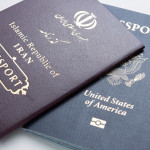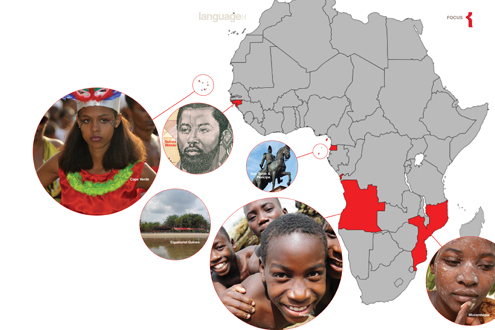 It has already been established that social media speeds up language evolution, but as the Chinese government actively censors online communities, the country’s language has been changing even more quickly. Recently, China drafted a new online surveillance law, further regulating digital censorship, making it required that upon the discovery of, “information [published by users] that the law or administrative regulations prohibits the publication or transmission of, they shall immediately stop transmission of that information, employ treatment measures such as deleting it, prevent the information from spreading, and save relevant records.” In response to this, users have begun replacing keywords used by the government to track political conversations with seemingly harmless phrases. For example, “hide-and-seek” stands for dying in police custody, in reference to authorities citing the game as the reason for a prisoner’s death. A growing unofficial political lexicon is being used by internet users who want to publicly discuss their frustration with the Chinese government.
It has already been established that social media speeds up language evolution, but as the Chinese government actively censors online communities, the country’s language has been changing even more quickly. Recently, China drafted a new online surveillance law, further regulating digital censorship, making it required that upon the discovery of, “information [published by users] that the law or administrative regulations prohibits the publication or transmission of, they shall immediately stop transmission of that information, employ treatment measures such as deleting it, prevent the information from spreading, and save relevant records.” In response to this, users have begun replacing keywords used by the government to track political conversations with seemingly harmless phrases. For example, “hide-and-seek” stands for dying in police custody, in reference to authorities citing the game as the reason for a prisoner’s death. A growing unofficial political lexicon is being used by internet users who want to publicly discuss their frustration with the Chinese government.
Internet Censorship Influences Chinese Language
August 2015

Making Words Dance
Kwame Alexander and Chris Colderley explain why we need to read and write more poetry in (and outside of) the classroom
Precision Rotation
Lance Knowles applies real-world knowledge to the implementation of the Flipped Classroom
Clearing Virtual Hurdles
Sylvaine Montaudouin tackles the challenges of developing content and teaching online
Composition Tools
These innovative programs can help build student confidence in their writing skills
Culture Flash
Kristal Bivona shares the excitement of a whirlwind high school tour of Spain and France
What’s New in EdTech
A selection of the latest education technology for teachers of language and literacy
Last Writes Richard Lederer shares horrific, but true examples of miscommunication
The Successful Revival of the Chitimacha Language
 Only a small portion of the world’s 7,000 languages have extensive written records. Those that are the least well-documented are the most in danger of disappearing. Due to European contact, through wars and disease, sharp decreases in language communities severely endangered many native languages and as less children on the reservation were homeschooled, the link between remaining native speakers and their children weakened. In 1930, an effort began to document the language of the Chitimacha tribe, which had only two remaining fluent speakers; Benjamin Paul and Delphine Ducloux. A linguist at the time, Morris Swadesh, worked with Paul and Ducloux to document the Chitimacha language’s linguistic diversity. After the death of the two remaining speakers, the language went through 60 years of silence until the early 1990’s when the Chitimacha tribe gained access to Morris’ linguistic documents.
Only a small portion of the world’s 7,000 languages have extensive written records. Those that are the least well-documented are the most in danger of disappearing. Due to European contact, through wars and disease, sharp decreases in language communities severely endangered many native languages and as less children on the reservation were homeschooled, the link between remaining native speakers and their children weakened. In 1930, an effort began to document the language of the Chitimacha tribe, which had only two remaining fluent speakers; Benjamin Paul and Delphine Ducloux. A linguist at the time, Morris Swadesh, worked with Paul and Ducloux to document the Chitimacha language’s linguistic diversity. After the death of the two remaining speakers, the language went through 60 years of silence until the early 1990’s when the Chitimacha tribe gained access to Morris’ linguistic documents.
Iran and the U.S. Look Forward to Academic Exchange
 While the nuclear deal between Iran and the P5+1 countries (China, France, Russia, U.K., U.S. and Germany) dominated the news cycle in July, other important diplomatic developments are occurring between Iran and the U.S. The Institute for International Education (IIE) released a report on U.S.-Iran academic relations in the context of warming diplomacy between the two countries after thirty tense years. Following Iranian President Hassan Rouhani’s 2013 speech at the Council on Foreign Relations in New York where he called for more mutual exchange to “foster more accurate knowledge and understanding among the people and leaders of our two countries, thwarting biases and false prejudgments from serving as bases for policymaking,” IIE sent a delegation to Iran to visit institutions of higher learning and discuss possibilities for collaboration. The delegation’s findings were published in the IIE report, “Reinventing Academic Ties: Opportunities for US Iran Higher Education Cooperation.” The report points out the importance of academic exchange as the U.S. and Iran redefine their relationship.
While the nuclear deal between Iran and the P5+1 countries (China, France, Russia, U.K., U.S. and Germany) dominated the news cycle in July, other important diplomatic developments are occurring between Iran and the U.S. The Institute for International Education (IIE) released a report on U.S.-Iran academic relations in the context of warming diplomacy between the two countries after thirty tense years. Following Iranian President Hassan Rouhani’s 2013 speech at the Council on Foreign Relations in New York where he called for more mutual exchange to “foster more accurate knowledge and understanding among the people and leaders of our two countries, thwarting biases and false prejudgments from serving as bases for policymaking,” IIE sent a delegation to Iran to visit institutions of higher learning and discuss possibilities for collaboration. The delegation’s findings were published in the IIE report, “Reinventing Academic Ties: Opportunities for US Iran Higher Education Cooperation.” The report points out the importance of academic exchange as the U.S. and Iran redefine their relationship.
First U.S. Study on Foreign Language Learning in 30 Years
The Commission will work with scholarly and professional organizations around the country to gather available research about the benefits of language instruction at every educational level, from pre-school through lifelong learning, and will help to initiate a nationwide conversation about languages and international education.
Students Protest Multilingual Instruction in South Africa
 Student protests disrupted classes and led to the cancellation of a career fair at Stellenbosch University in Western Cape, South Africa over a school-wide language policy that gives Afrikaans and English equal status as languages of teaching and learning.
Student protests disrupted classes and led to the cancellation of a career fair at Stellenbosch University in Western Cape, South Africa over a school-wide language policy that gives Afrikaans and English equal status as languages of teaching and learning.
Global Spanish

One of the best things about learning Spanish is the diversity of places in which it is spoken — and taught
Spanish is one of the ten main languages of the internet, meaning that a growth in speakers as well as online content is imminent. As the language has adapted to a globalized and technological world, the number of speakers has skyrocketed. Spain’s Cervantes Institute reported that there will be around 750 million speakers of Spanish in countries where it is an official language by 2050.
The U.S., which does not have any official languages, is predicted to have the largest Spanish-speaking population of any country by the same time. This has led to an increase in demand for Spanish speakers and teachers not only in the U.S. but also in places like China, where Hispanic countries are seen as growing markets. Spanish is the official language of over 20 countries, and continues to gain international and technological influence. Here is a selection of immersive Spanish-language-learning programs around the globe:
Multiple Destinations
Lingua Service Worldwide
Lingua Service Worldwide, an independent-language-study abroad agency, has been providing study abroad experiences since 1988. Lingua Service works with schools around the world that have been vetted for their excellence. Students interested in pursuing Spanish-language studies can choose between studying in Spain or in Hispanic America. Lingua Service works with schools virtually all over Spain; participants choose a popular destination like Madrid, Barcelona, Granada, or Valencia, or a destination off the beaten path, such as Cadiz, Salamanca, or San Sebastian.
In Hispanic America, Lingua Service works with institutions in Argentina, Chile, Colombia, Costa Rica, Ecuador, Mexico, Peru, and Uruguay. Lingua Service arranges everything for youth summer programs, professional language courses total immersion experiences, and even programs for seniors over 50. Institutions are chosen based on the quality of their offerings, so students can rest assured that they will receive a world-class education and stay in comfortable accommodations. The hardest part is choosing among so many enticing options.
Spanish Abroad
Spanish Abroad has offered summer Spanish camps in Latin America and Spain for nearly two decades. During this time, different program options through partner language schools have been refined to include intensive language-immersion courses, fun activities, and housing options that meet the needs of children and families when parents come along to learn Spanish. The summer camp in Tamarindo, Costa Rica, is popular, with children from five to 13 years old taking part in intensive Spanish courses along with cultural and beach activities in the afternoon.
In addition, they go on adventure tours, including zip-lining and visits to the monkey park. Intercambios are arranged for students to practice their Spanish with local children. The entire family can stay with a host family, and parents as well as teens can take Spanish courses and surf instruction at the language school located right on Tamarindo Beach. In Spain, summer Spanish camp options with children’s, teen, and adult courses are offered in San Sebastian, Barcelona, Salamanca, Marbella, and Madrid. Full summer Spanish camps are at local boarding schools with all-inclusive language instruction, activities, excursions, meals, airport transfers, and shared room and board. Private apartments can be arranged at any location.
Maximo Nivel
Maximo Nivel offers study abroad programs in three of the world’s most beautiful countries — Costa Rica, Guatemala, and Peru. Their intercultural centers offer the Native Spanish Program, volunteer abroad, International internships, TEFL certification, and youth Spanish camp. Students can live with a local host family or choose an apartment, hostel, or hotel. They can take part in adventure and culture programs, which offer exciting tours, trekking, and cultural activities in each country. University credit is available through Maximo Nivel’s official school of record: California State University-Monterey Bay.
SOL Education Abroad
Based in Heredia, Costa Rica, “SOL Mates” are immersed in Spanish language, culture, and Central America’s rich biodiversity. SOL directors lead excursions to the most beautiful and adventurous attractions and the most authentic cultural activities. The program includes classes at the Latina University in Heredia, homestays with Costa Rican families, excursions including white water rafting, rainforest zip line canopy tour, waterfalls, beach trips, hot springs, national parks, traditional cooking classes, dance classes, and volunteering in the local community. Students can come throughout the year for spring semester, fall semester, winter break, spring break, or summer intensive programs. An important detail that sets SOL apart is the included four-day international excursion to Nicaragua for all semester students. SOL also offers Spanish- and cultural-immersion study abroad programs in Mexico, Argentina, and Spain.
Argentina
Cultural Activities & Spanish Academy (CASA)
CASA means “home.” The term home is very commonly used by people to describe where they live and is closely associated with a sense of security, comfort, belonging, and calm. CASA tries to teach Spanish with this concept in mind. Classes are designed for occasional travelers and those who want to enjoy Buenos Aires and its extensive cultural and sports activities. CASA is located in downtown Buenos Aires, close to Retiro, La Recoleta Cemetery, and the financial district.
Costa Rica
WAYRA Spanish Institute
Situated on the northwest coast of Costa Rica, WAYRA is located at beautiful Tamarindo Beach, a perfect place for those who enjoy water sports, the natural outdoors, and lively entertainment. The school has offered a full Spanish-immersion program since 1996 and is recognized as a DELE examination center, associated with the Cervantes Institute. While learning Spanish, students can enjoy the beaches and the many outdoor activities such as surfing, snorkeling, diving, sailing, kayaking, fishing, tubing, yoga, martial arts, and hiking. Classes are held in beautiful and comfortable classrooms both in- and outdoors. Students learn in lots of space with perfect views of an amazing tropical garden where animals like iguanas, monkeys, anteaters, porcupines, squirrels, and exotic birds can often be seen. WAYRA offers a wide variety of lodging options, such as student houses in Tamarindo, which are all within walking distance of the school and the beach. In addition, students can experience real Costa Rican life and the meaning of pura vida by staying with a carefully selected family in a nearby town.
CPI
CPI allows students to see more of Costa Rica by combining classes at two or all three sites in different regions of the country: the city of Heredia, Monteverde Cloud Forest, and Flamingo Beach. Students appreciate the professional academic campus setting infused with comfortable spaces, lovely gardens, a pool, sporting areas, and open-air dining facilities. CPI offers support services like bilingual office staff, Wi-Fi, cultural activities, and tours to enhance the learning experience. The school also offers flexibility to customize programs, as well as to combine morning group classes with afternoon private classes. Groups are no larger than four people, which allows individual attention and increases the student-teacher interaction. Programs are for all ages and are available year round. Students can alternate accommodation options by living with a host family in one location and choosing the student residence in another. The school works with U.S. universities to assign academic transfer credits.
ILISA
Located in the heart of Costa Rica, ILISA Language Institute wants to make sure its students get the chance to fully immerse themselves in the local culture and explore Costa Rica as much as possible. They offer Spanish courses at all levels and are keen to keep the standard very professional but enjoyable. All of their programs can be arranged with a stay with a local host family so that students are fully immersed in the culture and gain an authentic experience. Their schools also provide cultural activities such as cooking classes, movie nights, and other cultural events that are included in the programs. Recently, they have expanded into Panama and are thus now operating in two Latin American countries.
Academia Tica
Academia Tica was one of the first Spanish schools established in Costa Rica, sharing local culture and language with international students for the past 30 years. Managed and run by locals, it is accredited by the Instituto Cervantes and a DELE exam center. The school’s philosophy is that learning has to be a fun adventure and it has to take advantage of all the cultural and natural traits of the country. Because of this, students can learn in two distinct locations (in the mountains/city and at the beach). Both campuses offer free activities and free help with travel arrangements. Programs include: intensive Spanish, volunteering, internships, tailor-made group programs, Surf & Spanish, exam preparation, teen camp (2016), and specialized courses such as business, medical, and a Spanish teachers’ program.
Mexico
Spanish Center Merida
The fascinating state of Yucatan, rich in culture, history, and natural wonders, is home to Spanish Center Merida, a school that offers full-immersion Spanish courses in a very friendly and cozy atmosphere. The city of Merida, imbued with a sense of peace and safety, is a fine blend of traditional cultural heritage and modern comforts, making it the perfect host city for international students. Merida has a prime location too, close to enigmatic Mayan sites, charming small towns, grand old sisal haciendas, ancient cenotes, and beautiful beaches. The city has a vibrant art and cultural scene with a wealth of museums, theaters, beautiful colonial architecture, traditional folk art, artisanal handicraft, and great food. The school offers students a richly unique learning experience with courses that are carefully tailored to the needs, interests, and learning style of each student, enhanced by many cultural activities such as cooking classes, salsa dancing, handicraft making, visits to local museums and markets, and short trips to Mayan sites and cenotes.
Spanish at Sea
Spanish at Sea is a fun Spanish-immersion course on a seven-night cruise to Mexico. Cruises leave from both San Diego and Los Angeles. In this eight day excursion, participants will enjoy over twelve hours of classroom training, conversational Spanish during lunch and dinners with the instructor and colleagues, and three cultural excursions in Cabo San Lucas, Mazatlán, and Puerto Vallarta, all undertaken in Spanish.
Na’atik Language and Cultural Institute
Na’atik is an independent language school in the heart of the stunning Yucatan Peninsula in the small, safe, colorful town of Felipe Carrillo Puerto, surrounded by tropical jungle and outstanding natural beauty. Na’atik’s goal is to open students’ eyes to a world of possibilities. Through affordable, encouraging English-language classes, they aim to help students in the local Maya community develop the skills and confidence to visualize and achieve their dreams. They also have a Study Abroad Yucatan (SAY) language-immersion program to provide a true intercultural experience by showing international Spanish- and Maya-language students the real Zona Maya (it’s not just the ruins!). Their name comes from the Maya expression To’on Na’atik meaning “we’re understanding each other.” Na’atik believes that cross-cultural exchange is the key to true understanding. It is only once we understand each other that we can see what is really possible.
SI Puebla
The Spanish Institute teaches the Spanish language and its culture through eight levels (three weeks each) of intensive immersion in Mexico. It follows the European Framework of Reference for Language and ACTFL guidelines. Students learn from the outset to think and express themselves in Spanish as they participate in an award-winning academic curriculum and a wide variety of extracurricular activities. The school has provided intensive immersion programs for over 30 years to students, professionals, and seniors from more than 60 countries based on a functional approach to language acquisition emphasizing using Spanish in authentic and diverse circumstances. Formal classes are dedicated to learning the structure of the language (comprehension, linguistics, reading, and writing) and the conversation portion of the program to using the Spanish language.
Spain
ENFOREX Don Quijote
Since 1986, Don Quijote has been at the forefront of Spanish language teaching, with over 35 schools in Spain and Latin America offering a wide range of study abroad programs and accommodations, combined with exciting activities and excursions. Their programs are available any time of the year and provide official academic transcripts recognized by U.S. universities and the highly regarded Instituto Cervantes. Among their study abroad programs are Spanish-language and cultural immersion programs for groups or individuals, internships and volunteering projects, and tailor-made programs for specific majors or minors, like business or nursing. Moreover, they have an international college in Barcelona, called BIC, where students can experience the multicultural atmosphere that characterizes the campus while studying on a semester abroad: fall, spring, or summer. For younger students, they offer a unique experience in their junior programs and international summer camps. They welcome students aged five to 18 from around the globe (mixed with local students, who make up 60% of participants) to spend an incredible time in Spain, Costa Rica, or Mexico, making friends and having fun while learning and experiencing the Spanish language and culture.
Estudio Sampere
Alberto and Isabel Sampere pioneered Spanish language teaching in the 1950s and established the first Estudio Sampere in Madrid in 1956. Today, they have five internationally renowned Spanish schools, where more than 75 professionals deliver quality language training. In the 21st century, third-generation Samperes are working to offer the best options to study Spanish in Spain and Latin America with schools in Madrid, Salamanca, Alicante, Cuenca (Ecuator), and La Habana (Cuba). Each of the schools offers a different advantage for learning Spanish.
Mester
Mester gives its international students the opportunity to feel, enjoy, and play an active part in the unique Spanish way of life that is significantly different from their own. Founded in 1991, the academy is based in the historic city of Salamanca. Salamanca is a great place to learn Spanish thanks to its reputation for “pure” Spanish. A wonderful place for language courses, Salamanca is a city students will get to know quickly and one that they’ll remember for a long time. The international atmosphere provides the chance to meet people from all over the world whilst experiencing an authentic Spanish lifestyle through the language courses and activities that Mester has on offer.
Escuela Montalbán
The school holds courses throughout the year in Granada, one of the most fascinating cities in Andalucia. The friendly atmosphere and personal touch of its classes, as well as Granada’s charm, turn language holidays into unforgettable experiences. The school building, characterized by its Andalusian style, its friendly classrooms, and its beautiful courtyard, retains much of the charm and intimacy of a family home. It is in a quiet location just ten minutes from the city center. Recently, the school has specialized in combined Spanish and Culture courses, such as cooking workshops, photo walks, yoga sessions, tango, salsa or flamenco dancing, scuba diving at Cabo de Gata-Níjar Natural Park (Almeria), horseback riding, hiking, or rock climbing in Sierra Nevada National Park.
#USLangAdvocacy
Portuguese Immersion
Talk about tough decisions: Brazil or Portugal?
There’s never been a better time to go to Brazil. With the Rio Olympic Games on the horizon in 2016 and the infrastructure already in place from the most recent World Cup, Brazil has never been so equipped to welcome international visitors. Meanwhile, Portugal continues to attract students with its old-world charm, delicious cuisine, and unique Iberian landscape. On top of this, Portuguese has never been more popular on U.S. university campuses: according to the most recent MLA report on language enrollments, between 2009 and 2013, Portuguese enrollments jumped by 10%. Here are some of the world’s best programs for studying Portuguese as a foreign language.
Portuguese from Cape to Cape

Brazil may be the Portuguese powerhouse, but the language is still alive and well in Africa
With a population of just 10 million people, Portugal has seen its language go global thanks to the dynamism of its ex-colonies. Portuguese’s status as the sixth-most-spoken language in the world is a direct result of Portugal’s empire, which owed its power and riches to the transatlantic slave trade, the massacre of indigenous populations, widespread cultural repression, and other atrocities characteristic of colonialism. Brazil separated from the empire without a war when the emperor’s son declared the South American giant to be an independent entity and appointed himself the Brazilian emperor. However, Angola, Guinea Bissau, and Mozambique fought horrific wars that did not end until the Portuguese military coup in 1974. The lusophone countries of Angola, Cape Verde, Guinea Bissau, Mozambique, and São Tomé e Principe were the last African nations to achieve independence from European colonizers. Despite hundreds of years of violent colonial relations with Portugal, these nations all adopted Portuguese as their official language and collaborate with Brazil, Portugal, and East Timor to make up the Community of Portuguese Language Countries (CPLC). The CPLC aims to foster diplomacy and political cooperation among member states and to promote the Portuguese language.
Some of the major actors who fought for decolonization and founded the independent African countries have spoken about why they chose the colonial language as an official language. Former prime-minister of Angola Fernando França Van-Dúnem remarked that adopting Portuguese as an official language “occurred naturally,” and former president of Cape Verde Pedro Pires asserted that Portuguese was “the most practical solution” for the newly independent nations.
“It was the only tool we had available, and we had to use it,” Pires explained. “The language served as a medium for communication, to spread the culture, and actually it had to be this way. We had no other language. It was the most practical solution, because the language is written and it was the language we used in school.”
Although Portugal’s former colonies in Africa boast a variety of indigenous languages, Portuguese was already the language of education and therefore the language of the elite. Furthermore, it was the common language among nationalist leaders from the newly independent countries. In addition to standard Portuguese, Portuguese-based creoles are also prevalent in the lusophone African countries. However, many creoles lack a written form, and those that have a written form are marginalized in education, literature, and journalism.
Today, Portuguese is also an important language for business, particularly in the oil, coal, natural gas, and other mineral industries. Having the second-largest oil reserves on the continent, Angola, and in particular its capital city of Luanda, attract multinational corporations and scores of expatriate oil-field workers amongst whom Portuguese is the common language.
Half of EU Doctors Rejected from UK for Poor English
 About a year after the EU’s freedom of movement rules were amended to require medical doctors to pass a language proficiency exam in order to practice medicine in an EU member state in the doctor’s non-native language, a shocking 45% of the doctors who applied to work in the UK were barred after failing to prove their English-language skills.
About a year after the EU’s freedom of movement rules were amended to require medical doctors to pass a language proficiency exam in order to practice medicine in an EU member state in the doctor’s non-native language, a shocking 45% of the doctors who applied to work in the UK were barred after failing to prove their English-language skills.



